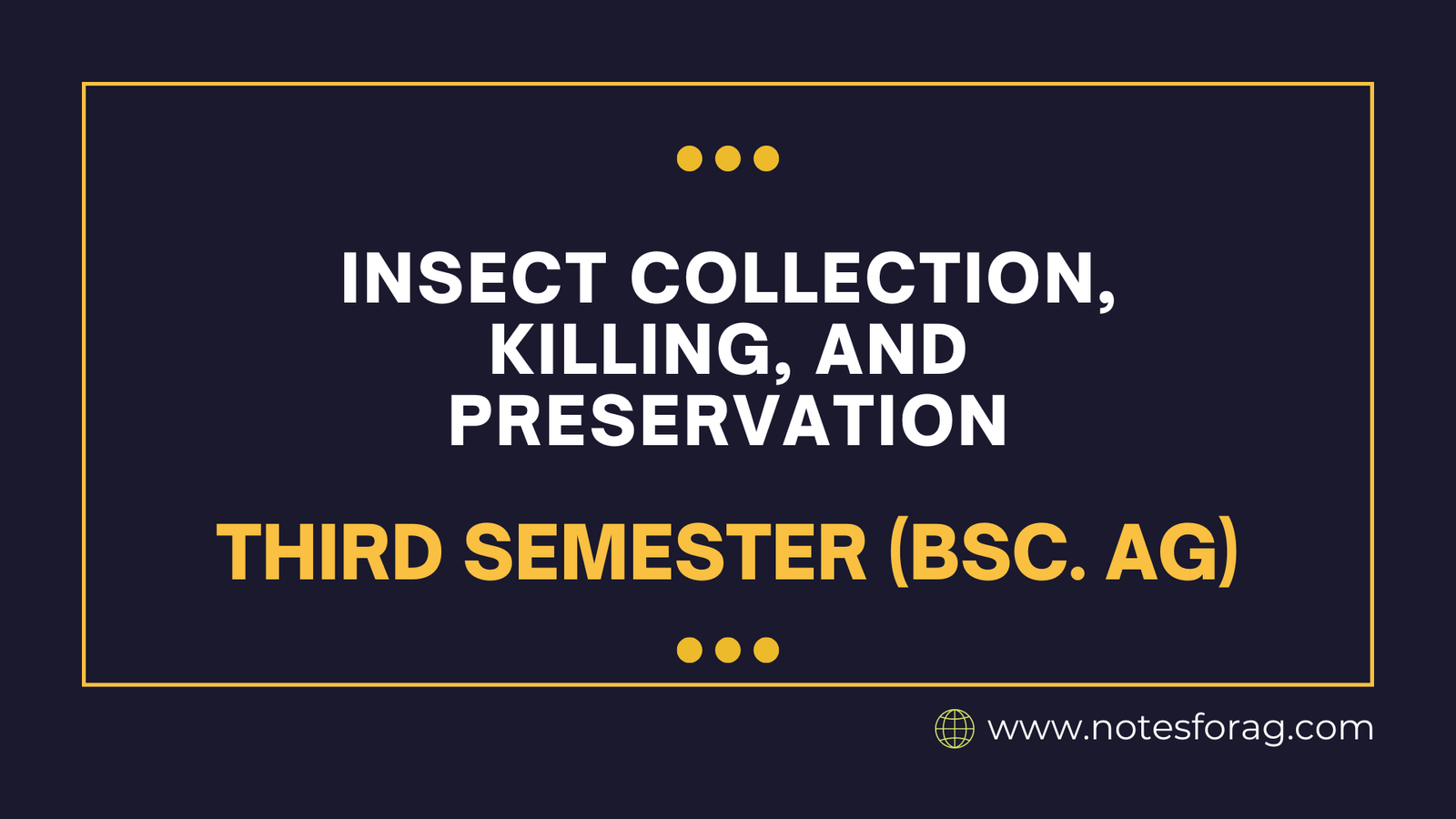Insect collection, killing, and preservation are necessary processes for scientific research, education, and personal collections. Insects are collected using methods such as handpicking, sweep netting, and trapping. They are then murdered gently with methods such as ethyl acetate in killing jars, freezing, or alcohol immersion. Depending on the size and type of the insect preservation entails pinning or preserving in alcohol, while labeling guarantees accurate documentation. This method helps to preserve specimens for long-term study and presentation.
Table of Contents
Introduction to Insect Collection
Insect collection is fundamental to several scientific areas, including taxonomy, ecology, and environmental research. Insect collection not only helps to explore biodiversity, but it also gives essential data for research and teaching. Understanding the function of insect collection in scientific inquiry is crucial for both collectors and researchers. With over a million known species, insects make up a large amount of Earth’s biodiversity, making their research critical for understanding ecosystem dynamics and providing insights into conservation requirements.
Insects can be captured using a variety of methods based on the type of bug and habitat.
- Hand-picking: To collect larger, slower-moving insects, use your fingers or forceps.
- Sweep Netting: Sweeping a wide net through grass or plants to capture flying or resting insects.
- Beating Tray: To remove insects, place a white tray or cloth under the foliage and shake or beat the branches.
- Pitfall traps: Small containers excavated into the ground to capture crawling insects, which are often baited to attract specific species.
- Light Trapping: Using ultraviolet (UV) light to attract nocturnal insects like moths.
- Aerial Netting: Used for flying insects that move quickly, such as butterflies and dragonflies.
- Malaise trap: A tent-shaped structure designed to catch flying insects.
- Water collection: Use nets or sieves in water bodies to catch aquatic insects.
Killing of Insects
Insect collection and preservation necessitates a meticulous approach, particularly in terms of humane specimen management. There are several methods for killing insects in a compassionate manner; the most commonly used are ethyl acetate and freezing. Each method has advantages and is applicable to a variety of insects. Insects collected for preservation frequently need to be killed humanely before storage. Some methods include:
- Ethyl acetate: When used in killing jars, it anesthetizes and kills insects swiftly. The jar’s lid is tight and lined with ethyl acetate-soaked paper or plaster.
- Freezing: To kill insects humanely, place them in a freezer for several hours or days.
- Cyanide jars: These were once ubiquitous, but are no longer used due to cyanide’s toxicity.
- Alcohol Immersion: Insects can be killed and preserved in 70-95% ethanol, particularly small or soft-bodied insects.
Preservation of Insects
The preservation of insect specimens is an important part of entomology because it ensures that vital data and biological traits are saved for future research. There are a variety of approaches available, each customized to the individual needs of distinct insects. After insects have been gathered and killed, adequate preservation is required to maintain their look and scientific value. Preservation procedures differ depending on the species of bug.
- Pinning: Larger insects, such as beetles and butterflies, are mounted on entomological pins that are entered through the thorax. Spreading boards are used to arrange insects, with their wings, legs, and antennae suitably positioned.
- Pointing: Small, delicate insects can be glued to a little triangular piece of card (“point”) and then pinned.
- Alcohol Preservation: Soft-bodied insects (such as aphids and termites) are best stored in vials containing 70-95% ethanol.
- Freezing: If quick preservation is not possible, insects can be temporarily preserved in the freezer.
- Drying: Some insects can be dried and stored in sealed containers using desiccants to avoid moisture buildup.
- Preventing Mold & Pests: Keep specimens in sealed containers to avoid humidity, mold, and pests. Pest deterrents include naphthalene and paradichlorobenzene.
- Handling delicate specimens: To avoid damage, use delicate forceps and handle objects carefully.
Frequently Asked Questions
What are the most common methods for collecting insects?
Insects can be collected by hand, with sweep nets, pitfall traps, light traps, aerial nets, and pounding trays. The approach is determined by the insects’ habitat and behavior.
What tools are essential for insect collection and preservation?
Insect nets, death jars (ethyl acetate), fine forceps, pins, spreading boards, alcohol vials, and airtight storage containers are all necessary instruments.
Related Articles

